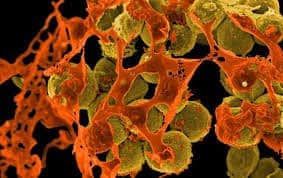University of California, Berkeley, scientists have discovered that chronic stress activates a hormone that reduces fertility long after the stress has ended, and that blocking this hormone returns female reproductive behavior to normal.
While the experiments were conducted in rats, the researchers are optimistic that blocking the gene for the hormone – called gonadotropin inhibitory hormone (GnIH) – could help women overcome the negative reproductive consequences of stress.
Stress is thought to be a major contributor to today’s high levels of infertility: Approximately three-quarters of healthy couples under 30 have trouble conceiving within three months of first trying, while 15 percent are unable to conceive after a year.
“What’s absolutely amazing is that one single gene controls this complex reproductive system, and that you can elegantly knock this gene down and change the reproductive outcome completely,” said Daniela Kaufer, an associate professor of integrative biology.
GnIH was discovered only 15 years ago, in quail, and found to be a powerful suppressor of fertility. Its mammalian equivalent, RFRP (RFamide-related peptide), was isolated in humans in 2009 by Kaufer’s UC Berkeley colleague George Bentley, an associate professor of integrative biology.
Bentley and Kaufer later found that exposing male rats to stress increased the brain’s production of RFRP. The new study found similar negative effects on fertility in female rats, though the increased levels of RFRP caused by chronic stress last much longer in females than in males. Three UC Berkeley labs – those of Kaufer, Bentley and Lance Kriegsfeld, an associate professor of psychology – collaborated on the study, which was led by graduate student Anna Geraghty and undergraduate Sandra Muroy.
“GnIH seems to be the main player, because it is elevated in the brain’s hypothalamus for a full estrus cycle after the stress ends,” Kaufer said. “When we knocked down levels of GnIH, we restored all reproductive behavior back to normal.”
“We know that human GnIH is present in the human brain and gonads, and that it inhibits the production of steroids in human ovaries, so certainly the potential is there for it to be manipulated to address human infertility,” Bentley said.
The researchers will publish their findings in the Jan. 13 issue of the journal eLife.
Relieving stress to allow captive breeding
Bentley is also excited about the potential to knock down GnIH to improve breeding success in captive animals, in particular those threatened with extinction in the wild.
“A lot of wild birds and vertebrates won’t breed in captivity in part, we think, because of chronic low-level stress,” Bentley said. “Just a chronic slight elevation in glucocorticoid stress hormones might influence the GnIH system and inhibit reproduction sufficiently to stop females from ovulating properly.”
Blocking the GnIH gene via gene therapy might alleviate this chronic stressor, he said. “The biology is there; I think we can do it.”
He and Kaufer are also involved in attempts, funded by a Michelson grant from the Found Animals Foundation, to boost RFRP hormone in mammals to induce permanent infertility in feral animals without the need to capture and neuter them.
“If the role of GnIH plays out to be a fundamental mechanism for integrating stress into the reproductive axis, we think we can turn it around the other way and overexpress RFRP in the brain and gonads and cause infertility in pest species or feral cats and dogs,” he said.
Stress and fertility
The effect of stress on reproduction is thought to be adaptive, preventing new births during times of scarcity or social disruption. Chronic stress can decrease the sex drive in both men and women, but also affect women’s ability to get pregnant and carry a fetus to term. Even the stress of trying to conceive can lower women’s chances. Tales abound of couples who adopt because they can’t conceive and suddenly become new biological parents.
To test the effects of chronic stress on female rats, Geraghty confined female rats for three hours a day for 18 days, then let the rats relax for four days – the rat’s typical estrus period, akin to women’s 28-day menstrual period. By the end of that stress-free hiatus, cortisol levels had returned to normal, though levels of the inhibitory hormone, called RFRP3 in rats, were still elevated.
“Even after the chronic stress was gone and levels of the stress hormone cortisol had returned to normal, we still saw a decrease in reproductive behavior: from an 80 percent pregnancy rate in normal rats to 20 percent in those who should have recovered from stress,” Kriegsfeld said. The 20 percent that actually got pregnant also experienced an increased incidence of embryo resorption of the fetus – the equivalent of a miscarriage.
Geraghty then used a virus developed in Kriegsfeld’s laboratory to insert into the brain an RNA blocker of the RFRP3 gene, which knocked down levels of the peptide hormone by about 75 percent during the period of chronic stress. She turned the gene back on after the stress ended in case it also plays a role during pregnancy.
“The knock-down RNA delivered during the period of chronic stress restored all subsequent reproductive behavior to normal: Mating behavior, pregnancy rate and the amount of embryo resorption were all back to normal,” Geraghty said.
“This study shows that even when chronic stress is not that extreme to where you stop your cycle, as when women under caloric restriction get amenorrhea, reproductive function is still hampered.”


